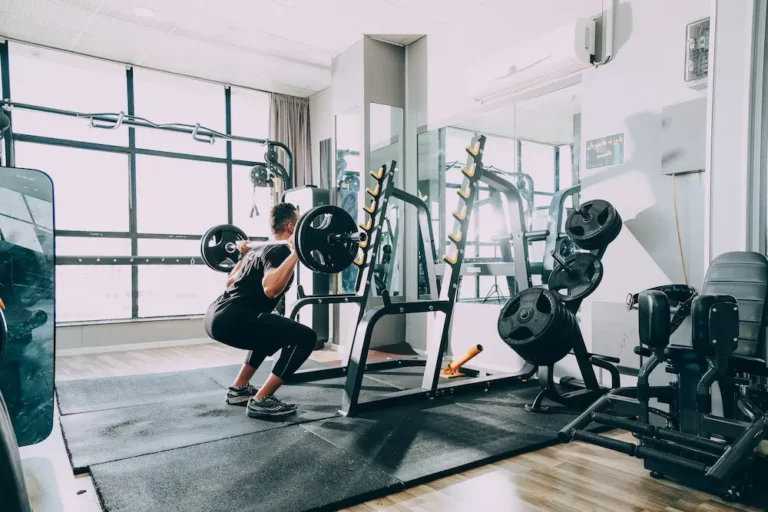Scraping for Plantar Fasciitis: A Guide to Relieving Foot Pain
As someone who has struggled with plantar fasciitis, I understand the frustration and pain that comes with this condition. It can make even the simplest tasks, like walking, unbearable. That’s why I’ve turned to scraping as a form of relief.
Scraping, also known as instrument-assisted soft tissue mobilization (IASTM), involves using a tool to apply pressure and friction to the affected area. This technique can help break up scar tissue, improve circulation, and reduce inflammation. When done correctly, scraping can be a powerful tool in the fight against plantar fasciitis.
While scraping may not be a cure-all for plantar fasciitis, it can provide much-needed relief and help speed up the healing process. It’s important to note that scraping should always be done by a trained professional and under the guidance of a healthcare provider. With the right approach, scraping can be a valuable addition to a comprehensive treatment plan for plantar fasciitis.
Understanding Plantar Fasciitis
As someone who has dealt with plantar fasciitis before, I know how frustrating it can be to deal with foot pain on a daily basis. In this section, I will provide a brief overview of what plantar fasciitis is, its symptoms, causes, and risk factors.
Symptoms
The most common symptom of plantar fasciitis is pain in the heel or arch of the foot. The pain is usually worst in the morning when you first get out of bed or after sitting for a long period of time. It may also be worse after exercise or physical activity.
Other symptoms may include:
- Stiffness in the foot or ankle
- Swelling or tenderness in the foot
- Pain that worsens over time
Causes
Plantar fasciitis occurs when the plantar fascia, a thick band of tissue that runs along the bottom of the foot, becomes inflamed. This can be caused by a number of factors, including:
- Overuse or repetitive stress on the foot
- Tight calf muscles or Achilles tendon
- Being overweight or obese
- Wearing shoes with poor arch support or cushioning
- Having flat feet or high arches
- Walking or standing for long periods of time on hard surfaces
Risk Factors
Certain factors may increase your risk of developing plantar fasciitis, including:
- Age (plantar fasciitis is more common in people over 40)
- Gender (women are more likely to develop plantar fasciitis than men)
- Certain types of exercise or physical activity (such as running or dancing)
- Certain occupations that require standing or walking for long periods of time (such as teachers, factory workers, or nurses)
- Certain medical conditions, such as arthritis or diabetes
By understanding the symptoms, causes, and risk factors of plantar fasciitis, you can take steps to prevent or manage the condition. If you are experiencing foot pain, it’s important to talk to your doctor or a podiatrist to determine the best course of treatment for you.
Scraping for Plantar Fasciitis
What is Scraping?
Scraping is a soft tissue mobilization technique that can be used to treat plantar fasciitis. It involves using a specialized tool to scrape the skin and fascia in order to break up adhesions and promote healing. The technique is also known as gua sha and has been used for centuries in traditional Chinese medicine to treat a variety of ailments.
During a scraping session, the therapist will use a tool to apply pressure to the plantar fascia while moving the tool back and forth. This scraping action helps to break up adhesions and scar tissue, which can be a common cause of plantar fasciitis. The therapist will also work on other areas of the foot and leg that may be contributing to the problem.
Benefits of Scraping
Scraping can provide a number of benefits for people with plantar fasciitis. Some of the main benefits include:
- Pain relief: Scraping can help to reduce pain and inflammation in the plantar fascia, which can be a major source of discomfort for people with plantar fasciitis.
- Improved range of motion: By breaking up adhesions and scar tissue, scraping can help to improve range of motion in the foot and ankle.
- Faster healing: Scraping can help to promote blood flow to the affected area, which can speed up the healing process and reduce recovery time.
- Improved function: By reducing pain and improving range of motion, scraping can help to improve overall foot function and reduce the risk of future injuries.
Overall, scraping can be a safe and effective treatment option for people with plantar fasciitis. However, it is important to work with a qualified therapist who has experience with the technique in order to get the best results.
Procedure of Scraping
As someone who has experienced the pain and discomfort of plantar fasciitis, I know how frustrating it can be to find relief. Scraping therapy, also known as gua sha, is a soft tissue mobilization technique that can help alleviate the symptoms of plantar fasciitis. Here’s what you need to know about the procedure of scraping.
Preparation
Before beginning the scraping procedure, it’s important to prepare the affected area. This involves cleaning the skin and applying a lubricant to help the tool glide smoothly over the skin. A common lubricant used is coconut oil, but any lotion or oil can be used.
Execution
To execute the scraping procedure, a specialized tool is used to apply pressure to the affected area. The tool is usually made of stainless steel and has a curved edge that is used to scrape the skin. The therapist will use short, firm strokes to scrape the skin, working in the direction of the muscle fibers.
During the procedure, you may experience some discomfort or pain. However, it’s important to communicate with your therapist and let them know if the pressure is too much to handle. The therapist can adjust the pressure to ensure that you are comfortable throughout the procedure.
Post-Scraping Care
After the scraping procedure, it’s important to take care of the affected area. You may experience some redness or bruising, but this is normal and should subside within a few days. To help alleviate any discomfort, you can apply ice to the affected area for 10-15 minutes at a time.
It’s also important to stay hydrated and to continue stretching and exercising to help prevent future flare-ups. Your therapist may recommend additional treatments, such as massage or physical therapy, to help address the underlying causes of your plantar fasciitis.
In conclusion, scraping therapy can be an effective treatment option for plantar fasciitis. By understanding the procedure and taking proper care of the affected area, you can find relief from the pain and discomfort of this common condition.
Potential Risks and Complications
As with any medical procedure, scraping for plantar fasciitis comes with potential risks and complications. While the risks are generally low, it is important to be aware of them before undergoing this treatment.
One potential risk is bruising. Scraping can cause bruising, especially if the area being treated is already inflamed or sensitive. However, bruising is usually mild and goes away on its own within a few days.
Another potential risk is infection. While rare, it is possible for bacteria to enter the body through the small incisions made during the scraping procedure. To minimize the risk of infection, it is important to keep the area clean and dry after the procedure.
In some cases, scraping can also cause nerve damage. This can lead to numbness or tingling in the foot, which can be temporary or permanent. However, nerve damage is rare and can usually be avoided by choosing an experienced and skilled practitioner.
Finally, it is important to note that scraping is not suitable for everyone. People with certain medical conditions, such as diabetes or blood clotting disorders, may not be good candidates for this treatment. It is important to discuss your medical history and any concerns you may have with your healthcare provider before undergoing scraping for plantar fasciitis.
Overall, while scraping for plantar fasciitis is generally a safe and effective treatment, it is important to be aware of the potential risks and complications. By choosing an experienced practitioner and following proper aftercare instructions, you can minimize these risks and enjoy the benefits of this treatment.
Alternative Treatments
While scraping can be an effective treatment for plantar fasciitis, there are also several alternative treatments available that may help alleviate pain and promote healing. Here are a few options to consider:
Stretching and Strengthening Exercises
Stretching and strengthening exercises can help reduce pain and improve flexibility in the foot and ankle. Some effective exercises include:
- Calf stretches: Stand facing a wall with your hands on the wall at shoulder height. Step back with one foot and press the heel down to stretch the calf muscle. Hold for 30 seconds and repeat on the other side.
- Toe curls: Sit in a chair with your feet flat on the floor. Place a towel on the ground and use your toes to scrunch it up, then release. Repeat for 10-15 reps.
- Ankle circles: Sit in a chair with your feet flat on the floor. Lift one foot off the ground and rotate the ankle in a circular motion. Repeat for 10-15 reps, then switch sides.
Massage Therapy
Massage therapy can be a great way to relieve tension and promote healing in the plantar fascia. A skilled massage therapist can use various techniques to help reduce pain and improve flexibility in the foot and ankle. Some common massage techniques for plantar fasciitis include:
- Deep tissue massage: This technique involves applying pressure to the deeper layers of muscle tissue to help release tension and promote healing.
- Trigger point therapy: This technique involves applying pressure to specific points on the foot to help relieve pain and tension.
- Myofascial release: This technique involves stretching and manipulating the fascia to help improve flexibility and reduce pain.
Acupuncture
Acupuncture is a traditional Chinese medicine technique that involves inserting thin needles into specific points on the body to help promote healing and relieve pain. While the effectiveness of acupuncture for plantar fasciitis is still being studied, some people find it to be a helpful treatment option.
Night Splints
Night splints are devices that are worn while sleeping to help stretch the plantar fascia and Achilles tendon. By keeping the foot in a dorsiflexed position (pointed upward), night splints can help reduce pain and improve flexibility in the foot and ankle.
Overall, there are several alternative treatments available for plantar fasciitis that can help reduce pain and promote healing. It’s important to work with a healthcare professional to determine the best treatment plan for your individual needs.
Conclusion
In conclusion, scraping can be a helpful technique for providing relief to individuals suffering from plantar fasciitis. By using tools to apply pressure and movement to the arch and heel, scraping can break up adhesions beneath the skin, promote increased blood flow and circulation to the injured area, and reduce contracture in the plantar fascia.
Scraping relies on the age-old practice of gua sha used for centuries in traditional Chinese medicine to help combat inflammation, pain, and more. By taking the benefits of gua sha to the next level, scraping can provide optimal relief for those suffering from plantar fasciitis.
It is important to note that while scraping can be helpful, it should not be the only form of treatment used for plantar fasciitis. It is recommended to use scraping in conjunction with other treatment methods, such as rest, stretching, and physical therapy.
If you are considering using scraping as a form of treatment for plantar fasciitis, it is important to consult with a healthcare professional first. They can help determine if scraping is a safe and effective option for your specific case.
Overall, scraping can be a valuable tool for those suffering from plantar fasciitis, but it should be used in combination with other treatment methods and under the guidance of a healthcare professional.







